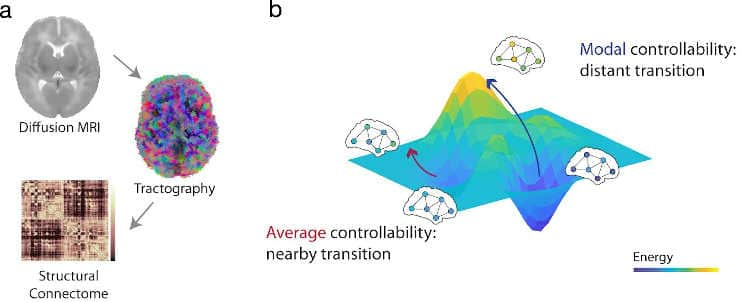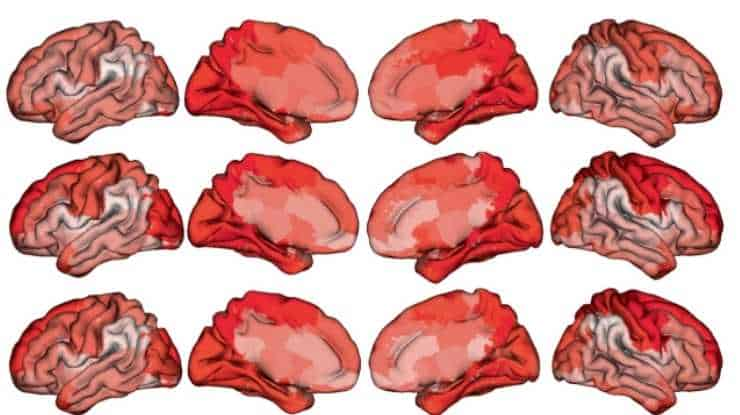A new study by Yale researchers provides insight into how the developing brains of infants function and alter over time, as well as how preterm delivery can interfere with these processes. The results, according to the researchers, may help identify therapies for neurodevelopmental disorders that involve abnormal developmental trajectories.
The purpose of the study was to determine how well infant brains regulate networks of brain regions and whether or not this early control is related to an individual’s cognitive ability as they get older. Unlike adolescents or adults, whose brain function can be studied by having them perform some sort of cognitive task, infants pose a particular challenge.
“With infants, we couldn’t ask them to do something like math, for instance. So we had to get more creative,”
said lead author Huili Sun, Ph.D. candidate in the lab of senior author Dustin Scheinost, associate professor of radiology and biomedical imaging at Yale School of Medicine.
Network Activation Simulation

Sun and her associates employed information gathered from the Developing Human Connectome Project, a sizable UK-based investigation of the development of the baby brain. MRI brain scans from 448 term and 73 preterm newborns were among them.
From those scans, the researchers constructed structural connectomes— maps of brain regions and the connections between them — and simulated the activation of brain networks based on the infants’ brain structure. They then calculated the control energy required for those network activations.
“You can think of each brain region as a power station and the connections between regions as the wires that connect power stations. Brain control is essentially the regulation of energy flow between power stations,”
explained Sun.
Modal and Average Controllability
The researchers assessed two types of control. The first, average controllability, describes the ability to switch between similar brain states: for example, transitioning from a motor behaviour like grasping to a sensory behaviour like listening, which use similar brain circuits.
Modal controllability, on the other hand, pertains to the brain’s capacity to transition between more discrete states, such as when performing complex cognitive processes like attention and decision-making.
The study findings indicate that average controllability in both term and preterm infants emerged prior to modal controllability, with the former occurring as early as the third trimester!
This fits with what is known about newborn development, said the researchers. At this early age, infants typically learn sensory and motor behaviours, which rely on similar brain circuits and make prioritizing average controllability, or switching between similar states, beneficial.
Newborns lack the development of brain networks that support complex cognitive functions; therefore, high modal controllability is unnecessary.
Regional Controllability
While term and preterm infants had similar patterns of controllability, the extent of controllability within individual brain regions differed between the two groups.
A number of the brain regions exhibiting the most pronounced variations in controllability were identified as foundations for recognized impairments observed in prematurely born children. These regions encompassed those that are associated with social processing and language development.
However, the researchers also found that preterm infants were able to “catch up” to their term-born peers, showing more rapid development of regional controllability in the first months of life.
“Maybe most interestingly, across all infants, the higher the controllability of a brain region at birth, the faster it developed over time,” said Sun. “And infants with stronger controllability at birth tended to have stronger cognitive ability at 18 months old.”
According to the researchers, the results ultimately provide fresh understanding of the functioning of the brain during the earliest stages of life and may guide the development of treatments for neurodevelopmental disorders that alter developmental trajectories.
In adults, deep brain stimulation and transcranial magnetic stimulation has been used to activate or deactivate particular brain regions,
said Sun.
Such an approach for infants is still quite distant in the future, but it is a plausible avenue to consider.
Abstract
White matter connectivity supports diverse cognitive demands by efficiently constraining dynamic brain activity. This efficiency can be inferred from network controllability, which represents the ease with which the brain moves between distinct mental states based on white matter connectivity. However, it remains unclear how brain networks support diverse functions at birth, a time of rapid changes in connectivity. Here, we investigate the development of network controllability during the perinatal period and the effect of preterm birth in 521 neonates. We provide evidence that elements of controllability are exhibited in the infant’s brain as early as the third trimester and develop rapidly across the perinatal period. Preterm birth disrupts the development of brain networks and altered the energy required to drive state transitions at different levels. In addition, controllability at birth is associated with cognitive ability at 18 months. Our results suggest network controllability develops rapidly during the perinatal period to support cognitive demands but could be altered by environmental impacts like preterm birth.
Reference:
- Sun, H., Jiang, R., Dai, W. et al. Network controllability of structural connectomes in the neonatal brain. Nat Commun 14, 5820 (2023).
Top Image: Normalized regional average controllability was spatially similar across the preterm at birth, preterm at TEA infants, and term groups. Credit: Nat Commun 14, 5820 (2023).
